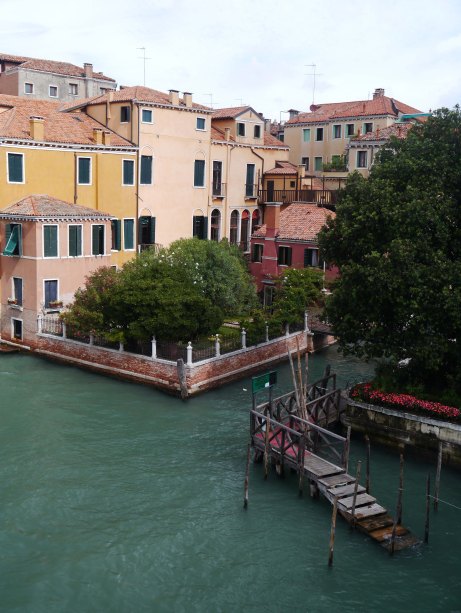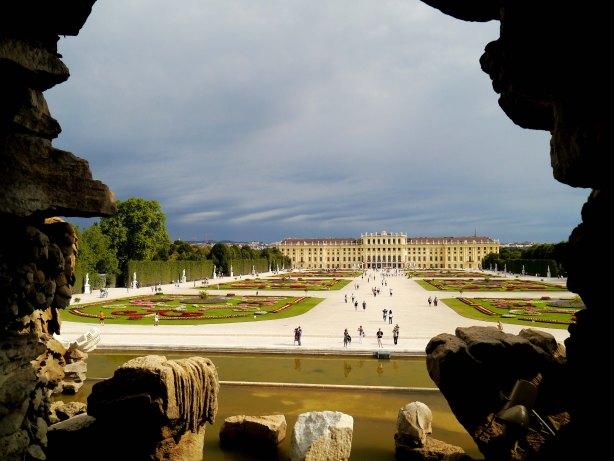The following day we decided to explore the less crowded areas of Venice.
Although the residential areas weren’t full of towering churches or enticing designer clothes, I ended up liking the quiet streets more and more as we explored them. The ground was dirty, the air smelled like salt water and fish, and the buildings were crumbling, but it was like nothing I’ve ever seen before. I’m so glad that I was able to get to see Venice, because it really is a very different city.
One thing that I thought was really cool were the wooden posts in the water. Somehow I think they made “traffic lanes” in the water and all the boats seemed to know exactly where they should go. It was also fun to see the water line on the posts showing how high the tide reaches.
On the nights when there was a possibility of rain, which while we were there was every night, the gondolas would be covered in blue covers to keep the fabric on the seats and the inside dry.
The gondola’s themselves were each very unique and very fancy. The all had a little couch in the center and then a few chairs on the side. The fabric was usually a bright red, while the embellishments around the sides were golden.
There were about a million pigeons on the island, perhaps just as many pigeons as there were tourists.
Below is my favorite set of stairs I found in Venice. They looked like they should have lead to something, but only disappeared into the water. There were a lot of stairs that went into the water like this. Most of them are for getting out of boats, but Venice is (or was according to some) sinking, so I like to imagine that maybe there’s something more hidden beneath the water.
For this picture we were walking along a bridge and I just love the way the buildings look like they are floating.
A lot of the walls of the buildings were crumbling like in the picture below. It looked like people had tried to repaired the wall multiple times, but it just continued to fall into disrepair.
There were also a lot of buildings that were obviously uninhabited.
Even some of the nicer places had stains and streaks running down the side of the building.
In many of the courtyards there were these huge wells that were sealed shut. Although I never saw anyone use the wells, which probably don’t work anymore, there were other smaller spouts that constantly poured water and more than once I saw residents walk out and grab some water from the spouts with a bucket.
There were a surprising amount of dogs in Venice. Sometimes it was hard to tell if someone owned them or if they were strays, because there were so many out on the street without a leash or collar. The dog below was just relaxing, while his owner was somewhere inside the building.
There were at least two towers that I saw that looked slightly unstable leaning to one side.
Eventually we wandered over into the Castello district and found the Arsenale. The Arsenal was the shipyard and armory for Venice.
Walls of the Arsenale
After a very long day of exploring we headed back to our room for the night and began to pack for our flight the next day. We all felt a little relieved to be leaving, because we had been on the go from dawn till dusk for about three days, but it was also sad leaving Venice knowing that we had only scratched the surface of things to do and see.
The next day we had to leave the apartment at 11 and although we didn’t have our flight until 7 p.m., we decided to meander through the city towards the bus station. It ended up only taking us about a half hour to walk slowly across more than half the island. Once we arrived at the airport we weren’t allowed to go through check-in until two hours before our flight. By the end of the day we had sat in the airport for seven hours and compared to that our 50 minute flight was nothing!































































